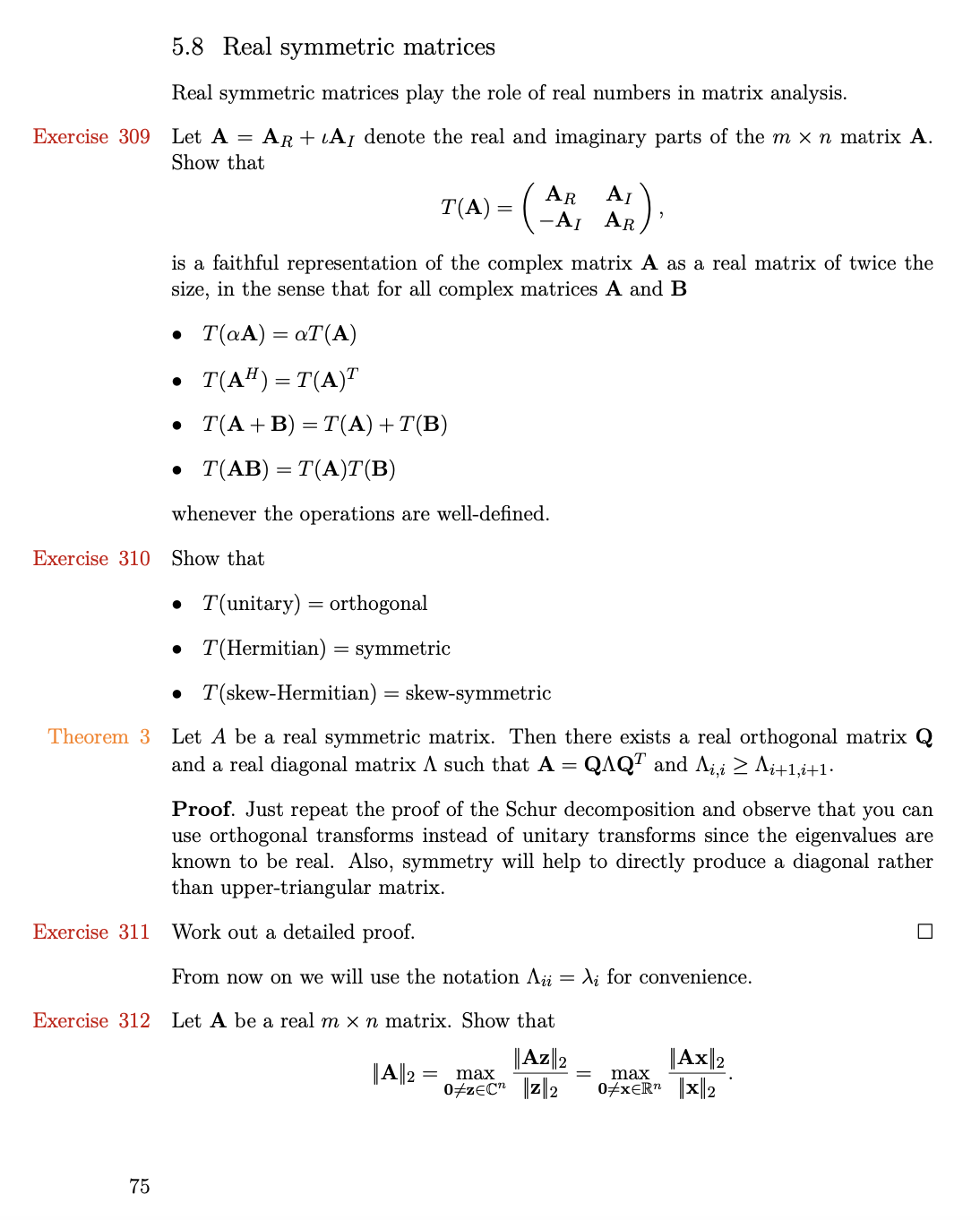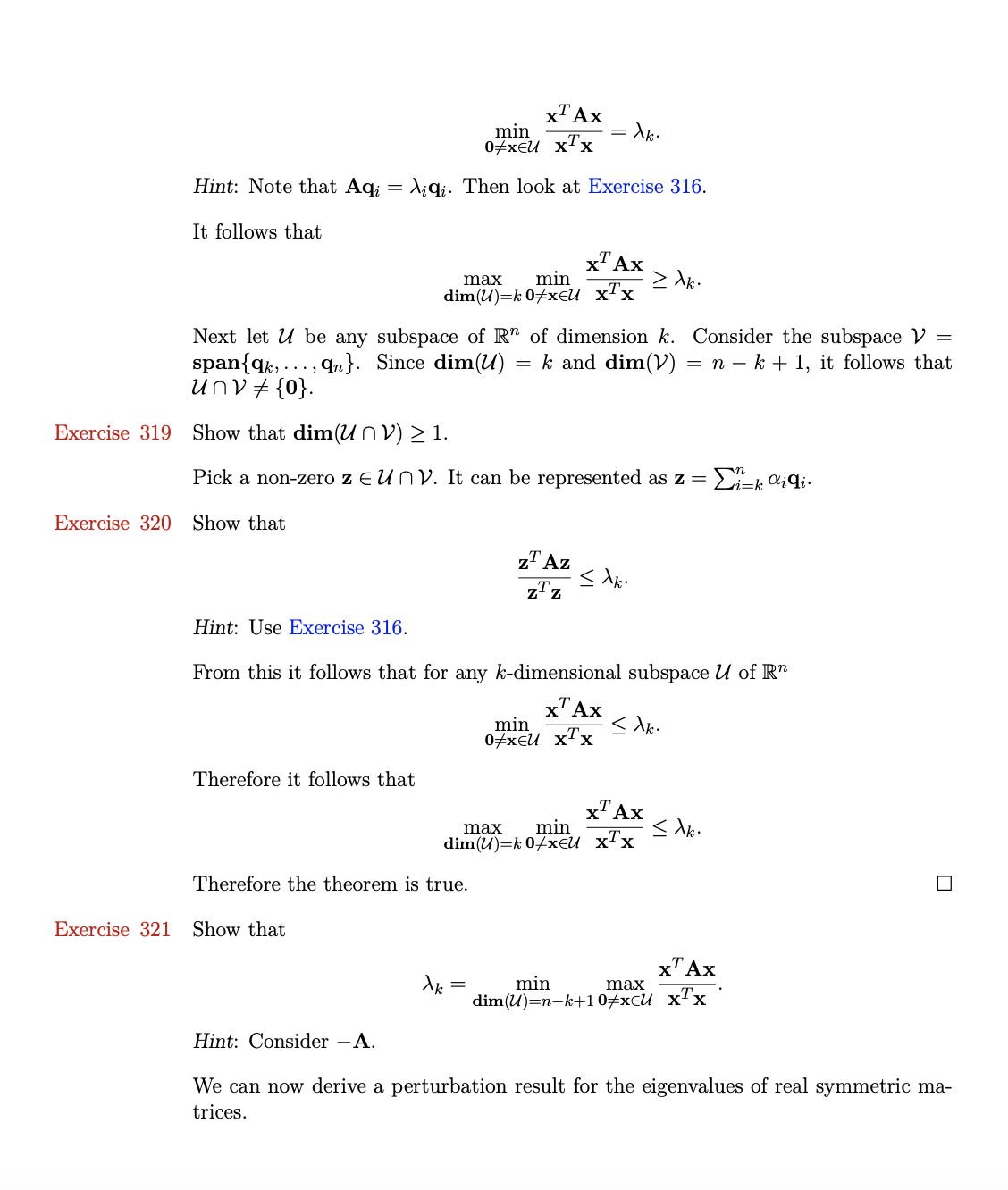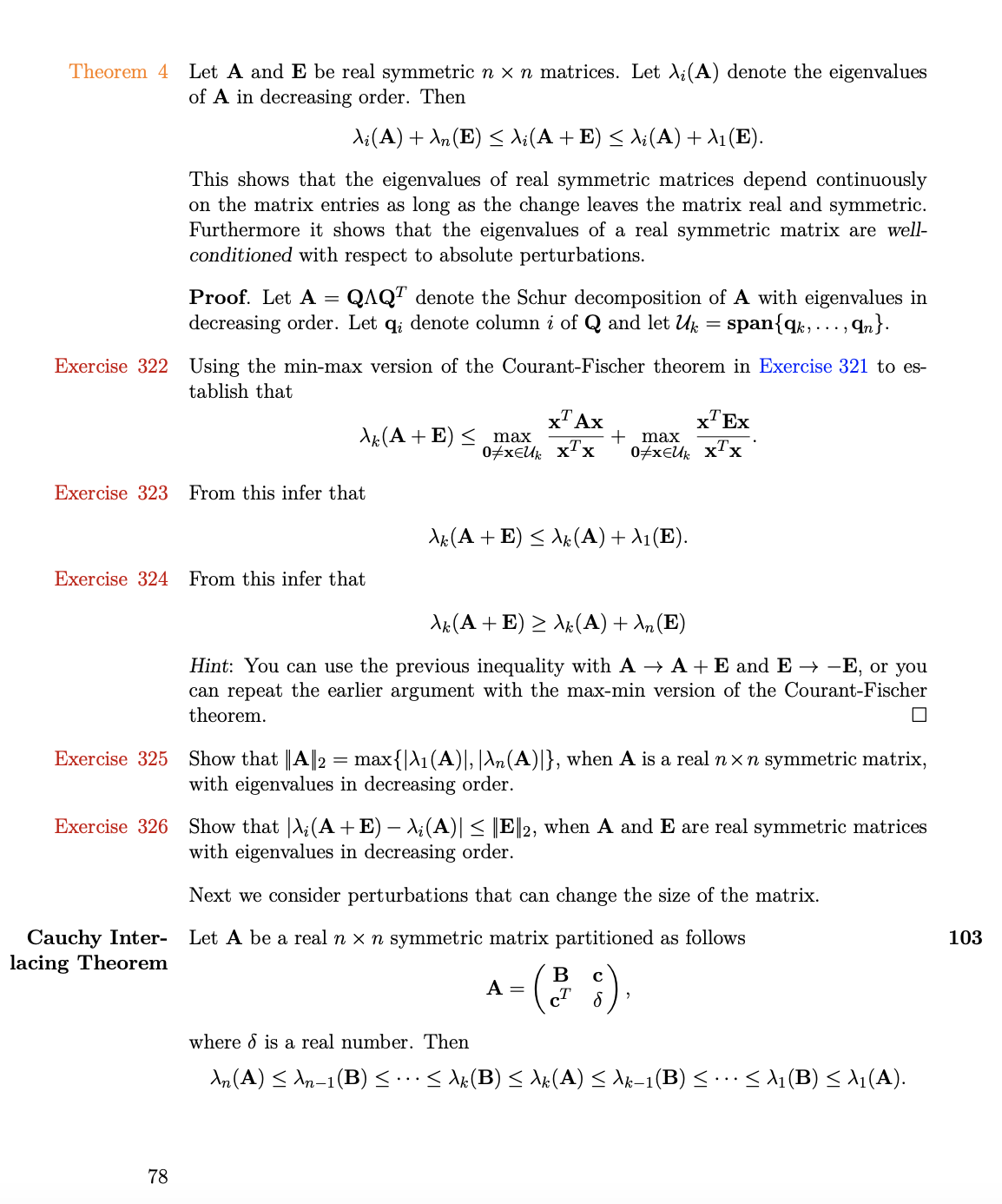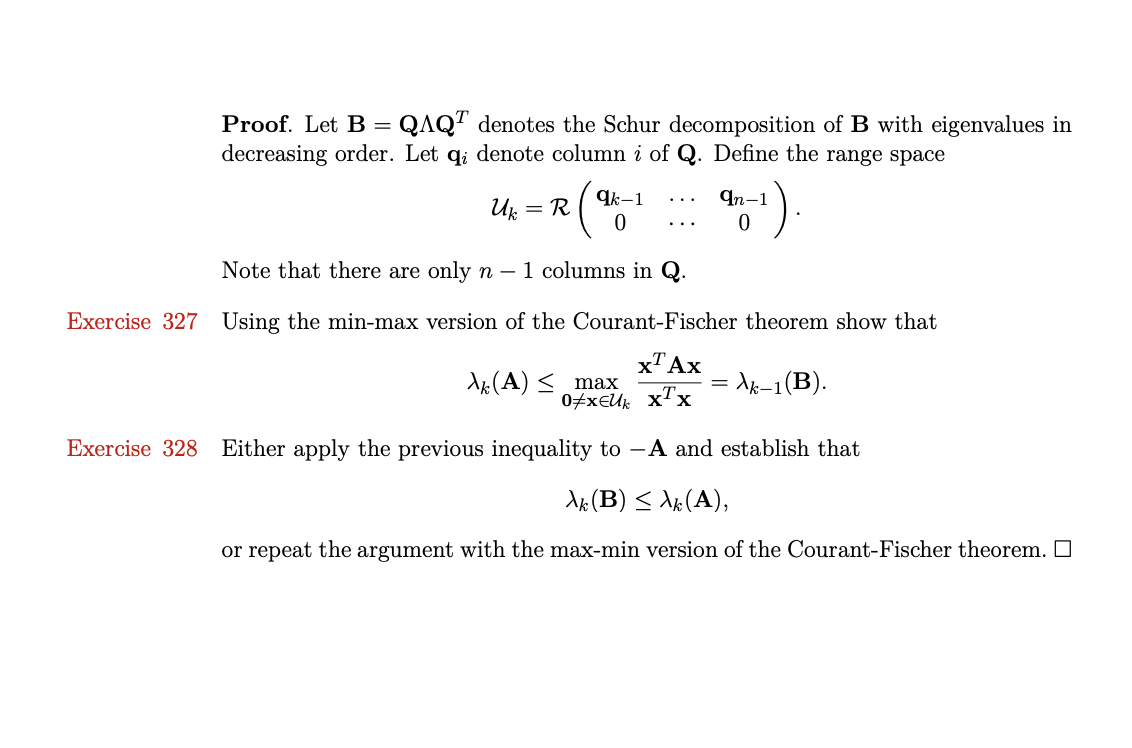Could you please help with question 327 and 328? Thanks
Exercise 309 Exercise 310 Theorem 3 Exercise 311 Exercise 312 75 5.8 Real symmetric matrices Real symmetric matrices play the role of real numbers in matrix analysis. Let A = A3 + LA; denote the real and imaginary parts of the m X to. matrix A. Show that _ A3 A; T(A)_(AI AR): is a faithful representation of the complex matrix A as a real matrix of twice the size, in the sense that for all complex matrices A and B o T{ocA) = ocT (A) . T{AH) = T(A)T o T{A + B) = T(A) + T(B) o T{AB) = T(A)T[B) whenever the operations are well-dened. Show that o T{unitary) = orthogonal o T(Hermitian) = symmetric o T(skewHermitian) = skew-symmetric Let A be a real symmetric matrix. Then there exists a real orthogonal matrix Q and a real diagonal matrix A such that A = QAQT and A\" Z Ai+l,i+1- Proof. Just repeat the proof of the Schur decomposition and observe that you can use orthogonal transforms instead of unitary transforms since the eigenvalues are known to be real. Also, symmetry will help to directly produce a diagonal rather than upper-triangular matrix. Work out a detailed proof. El From now on we will use the notation A, = A1- for convenience. Let A be a real m x to. matrix. Show that Az A ||A||2= max " "2: ax ' '42. OazEC" IIZII2 095x611?\" |X||2 Hint: Exercise 185 might be useful. Exercise 313 Redo the proof of the SVD and show that if A is a real (possibly non-square) matrix, then there exist real orthogonal matrices U and V such that A = UEVT, with E having non-zero entries only on its principal diagonal, and Zi,i 2 Zit1,it1 2 0. Exercise 314 Let A be a real symmetric matrix. . Let A = QAQ be its Schur decomposition. Show how to use it to write down the SVD of A. . Let A = UEVT be its SVD. Is it always possible to infer the Schur decomposition directly from the SVD? Hint: ( ' ") Exercise 315 Let A be a m xn matrix. Use the SVD of A to write down the Schur decomposition of AHA and AAH. You cannot use these formulas to directly infer the SVD of A from the Schur decompositions of AA and AAH. Why? Exercise 316 Let A be an n x n real symmetric matrix with eigenvalues Mi. Show that for real x0 x' Ax xTx Hint: Use the Schur decomposition to convert the Rayleigh quotient (the frac- tional middle term above) into the form yAy yTy urant-Fischer Let A be a real n x n symmetric matrix with eigenvalues ; in decreasing order 102 di 2 hit1. Then X' Ax NK = max min dim(u)=k Ofxeu xx Proof. Exercise 317 Use Exercise 316 to prove the theorem for k = 1 and k = n. Now fix k to be a number between 1 and n. Let qi denote column i of the matrix Q from the Schur decomposition of A = QAQ". First pick U = span {q1, . . ., qx}. Exercise 318 Show that for this choice of U 76x/ Ax min Ofxeu xix = Ak. Hint: Note that Aqi = Xiqi. Then look at Exercise 316. It follows that max min X' Ax - 2 Xk. dim(u)=k Ofxeu xx Next let U be any subspace of R" of dimension k. Consider the subspace V = span {qk, . . ., qn}. Since dim(U) = k and dim(V) = n - k + 1, it follows that unv # {} Exercise 319 Show that dim(un V) 2 1. Pick a non-zero z E Un V. It can be represented as z = Et-k Qiqi. Exercise 320 Show that ZAZ zTZ Hint: Use Exercise 316. From this it follows that for any k-dimensional subspace U of R" min x Ax Ofxeu xx Therefore it follows that max min x Ax dim(U)=k 0/xeu x x SAK. Therefore the theorem is true. Exercise 321 Show that x Ax min max dim(U)=n-k+10/xeu xx Hint: Consider -A. We can now derive a perturbation result for the eigenvalues of real symmetric ma- trices.Theorem 4 Let A and E be real symmetric n x n matrices. Let );(A) denote the eigenvalues of A in decreasing order. Then di(A) + An (E) >k(A) + in (E) Hint: You can use the previous inequality with A - A + E and E - -E, or you can repeat the earlier argument with the max-min version of the Courant-Fischer theorem. O Exercise 325 Show that |A|2 = max {|)1(A)|, [An (A) |}, when A is a real n x n symmetric matrix, with eigenvalues in decreasing order. Exercise 326 Show that |;(A + E) - ;(A) | k-1(B). Exercise 328 Either apply the previous inequality to -A and establish that AK ( B)











